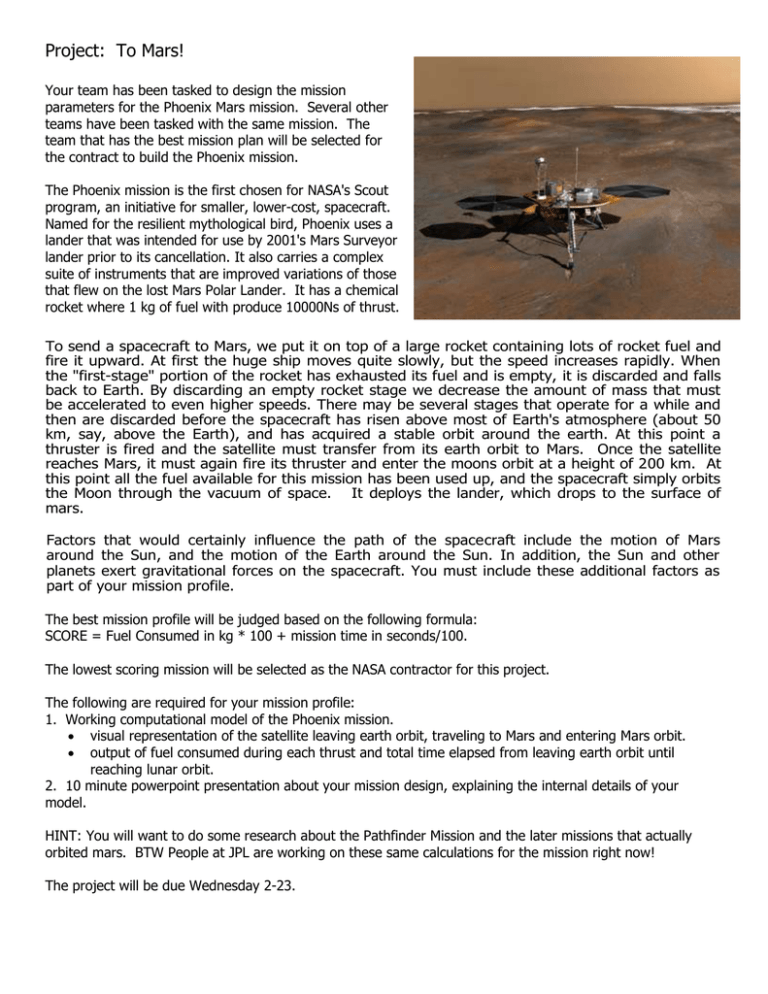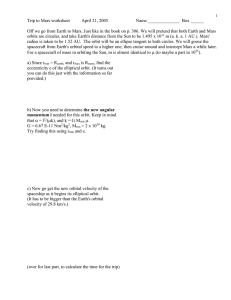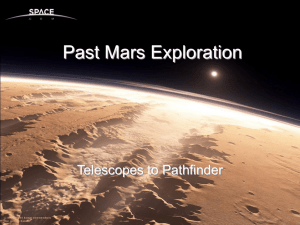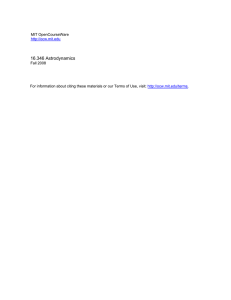Project 1 To Mars.doc
advertisement

Project: To Mars! Your team has been tasked to design the mission parameters for the Phoenix Mars mission. Several other teams have been tasked with the same mission. The team that has the best mission plan will be selected for the contract to build the Phoenix mission. The Phoenix mission is the first chosen for NASA's Scout program, an initiative for smaller, lower-cost, spacecraft. Named for the resilient mythological bird, Phoenix uses a lander that was intended for use by 2001's Mars Surveyor lander prior to its cancellation. It also carries a complex suite of instruments that are improved variations of those that flew on the lost Mars Polar Lander. It has a chemical rocket where 1 kg of fuel with produce 10000Ns of thrust. To send a spacecraft to Mars, we put it on top of a large rocket containing lots of rocket fuel and fire it upward. At first the huge ship moves quite slowly, but the speed increases rapidly. When the "first-stage" portion of the rocket has exhausted its fuel and is empty, it is discarded and falls back to Earth. By discarding an empty rocket stage we decrease the amount of mass that must be accelerated to even higher speeds. There may be several stages that operate for a while and then are discarded before the spacecraft has risen above most of Earth's atmosphere (about 50 km, say, above the Earth), and has acquired a stable orbit around the earth. At this point a thruster is fired and the satellite must transfer from its earth orbit to Mars. Once the satellite reaches Mars, it must again fire its thruster and enter the moons orbit at a height of 200 km. At this point all the fuel available for this mission has been used up, and the spacecraft simply orbits the Moon through the vacuum of space. It deploys the lander, which drops to the surface of mars. Factors that would certainly influence the path of the spacecraft include the motion of Mars around the Sun, and the motion of the Earth around the Sun. In addition, the Sun and other planets exert gravitational forces on the spacecraft. You must include these additional factors as part of your mission profile. The best mission profile will be judged based on the following formula: SCORE = Fuel Consumed in kg * 100 + mission time in seconds/100. The lowest scoring mission will be selected as the NASA contractor for this project. The following are required for your mission profile: 1. Working computational model of the Phoenix mission. visual representation of the satellite leaving earth orbit, traveling to Mars and entering Mars orbit. output of fuel consumed during each thrust and total time elapsed from leaving earth orbit until reaching lunar orbit. 2. 10 minute powerpoint presentation about your mission design, explaining the internal details of your model. HINT: You will want to do some research about the Pathfinder Mission and the later missions that actually orbited mars. BTW People at JPL are working on these same calculations for the mission right now! The project will be due Wednesday 2-23.




